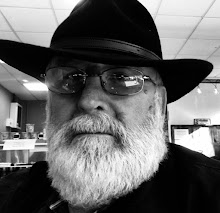Recovery Children Within are addicts. We are addicted to dissociation.Not addiction.
Several months ago we started to wonder if the defences we commonly use could possibly be termed addiction. We knew they were habitual. We knew they happened spontaneously, like a reflex, without time for us to stop and reflect whether or not this was the response we wanted to use; we knew that when we tried to use other responses it was exceedingly difficult and required much continual work on our part.
We looked up addiction in online dictionaries: “The condition of being habitually or compulsively occupied with or involved in something.”
That sounds accurate.”The state of being enslaved to a habit or practice.” Well, that certainly fits! “And the last one: “Habitual psychological and physiological dependence on a practice beyond one’s voluntary control.” That definition fit completely. We COULD NOT stop dissociating when we wanted to.
We do not attach a moral judgment to the word “Addiction”. It is a simple statement of fact. We did not make the choice to voluntarily start using dissociation to get through life. We did not make the choice to continue to use it. We would not be alive today if I had not learned and used the skill of
dissociation. But it is now beyond our control and is now unnecessary in our life. Naming this addiction gives us tools within the ten stages to use so we can let go of it. We are able to be more patient with ourself and more effective in overcoming it. When we acknowledge our Child Within.
OK. So we knew we are still addicted. But exactly what are we addicted TO?
Researching the term “dissociation” I found this definition by Dr. Bennett Braun: “the separation of an idea or thought process from the main stream of consciousness” (Braun, 1988). Everybody uses dissociation. People use it to screen out unnecessary stimuli. With un-traumatised people, this is a
choice and not problematical. Any time a person is focused in on something to the exclusion of one or more aspects of present day reality, they are using dissociation. Everyone here has used this – perhaps when reading a book, or practicing a musical instrument, or figuring out income tax. That kind of dissociation is helpful
Another way to think of dissociation is as a method of dealing with trauma by not knowing about it.2 The memory of events may be split into separate components. Dr. Bennett Braun developed the BASK model; an easy way to understand this. BASK stands for Behaviour, Affect, Sensation and Knowledge. If any one of these is missing in your memory of an event, then you are dissociating. “Behaviour” is the action associated with an event. For ourself, in times of stress, I find myself putting my hand on the back of my neck. I would do this unknowingly, with no conscious memories or reasons.
The Ten Stages is a studied recovery course. It is a source of reconnection a method of unlearning and a reintroduction to our child within which leads us back to our one true intuitive voice.We start to learn and come out of our protective dysfunctional shell and reclaim our lives. #childwithin#10stages
Home
»
Recovery Children Within are addicts. We are addicted to dissociation.Not addiction.
» Recovery Children Within are addicts. We are addicted to dissociation.Not addiction.
Subscribe to:
Post Comments (Atom)





Post a Comment Blogger Facebook